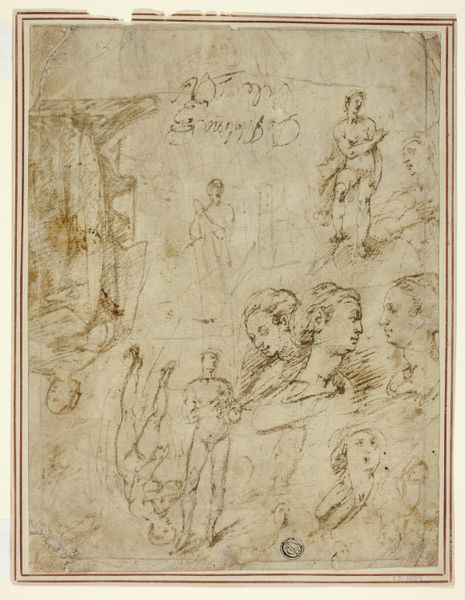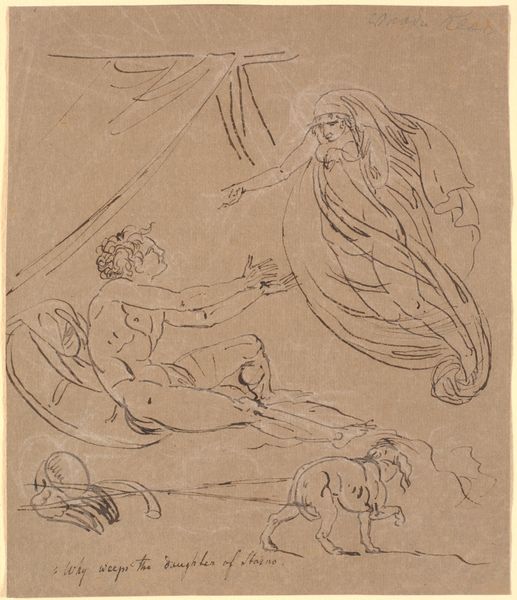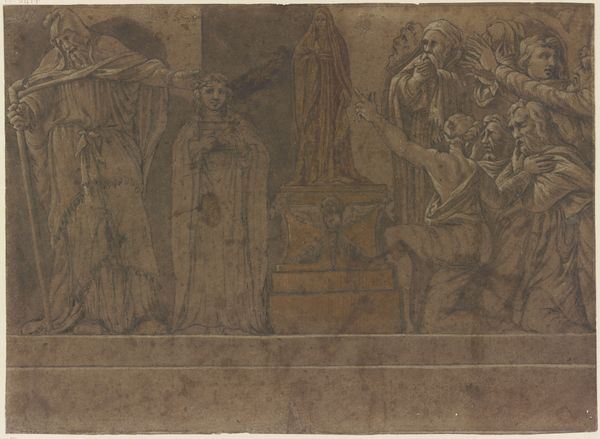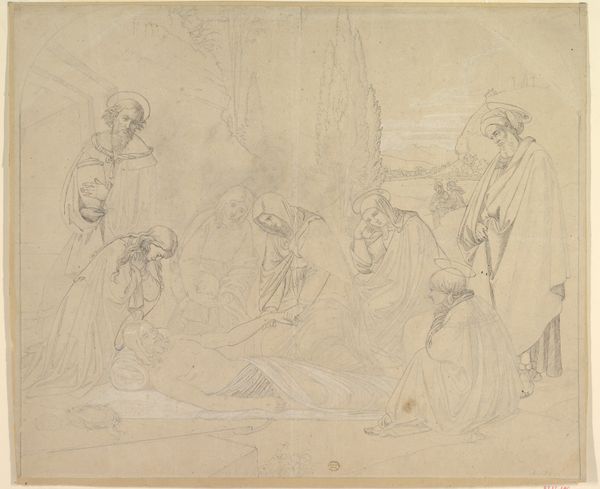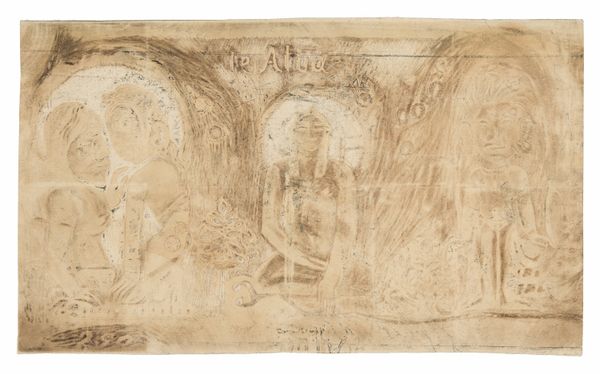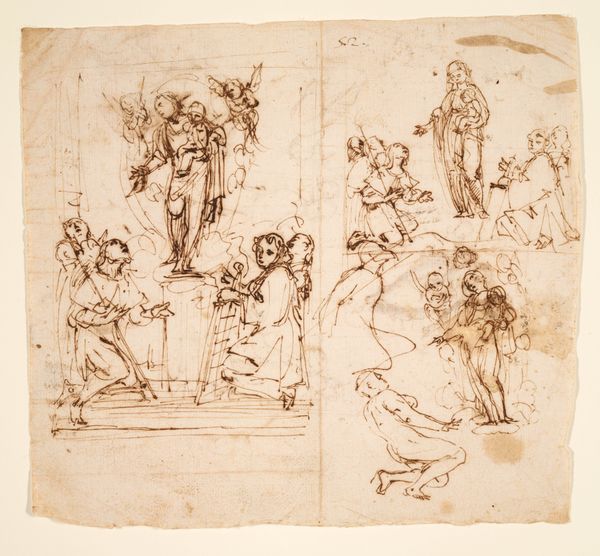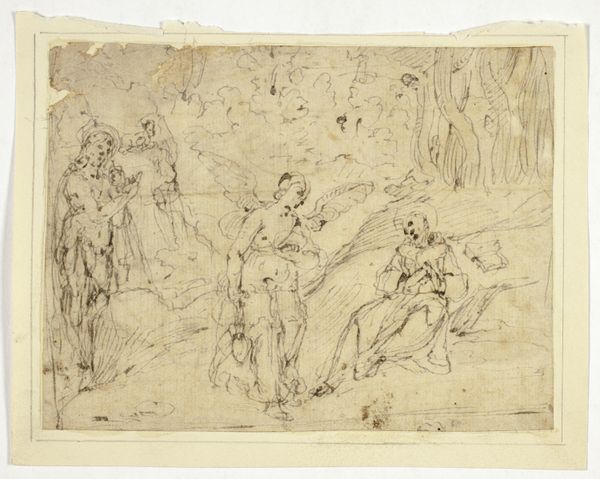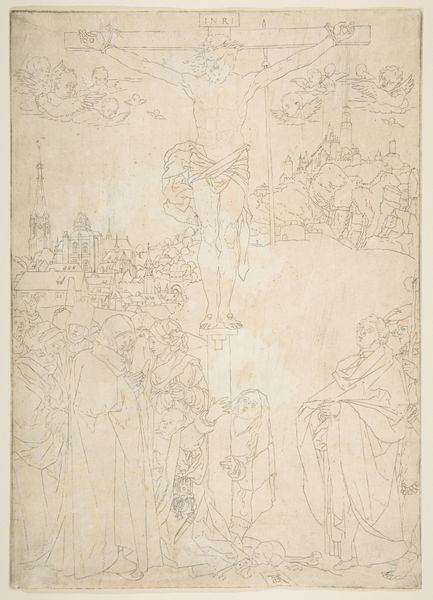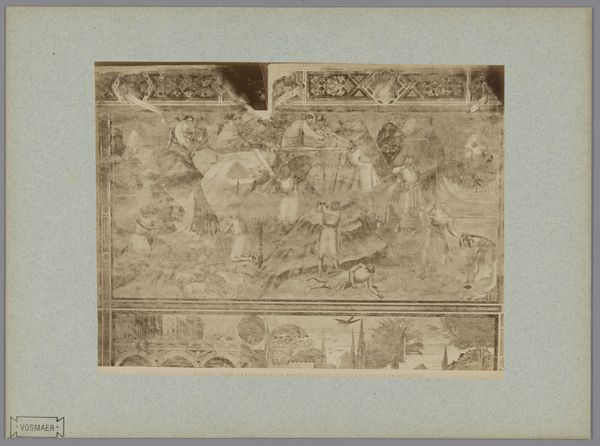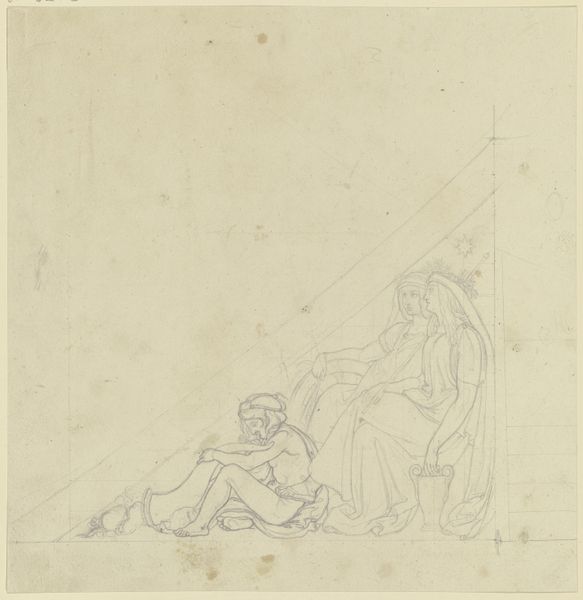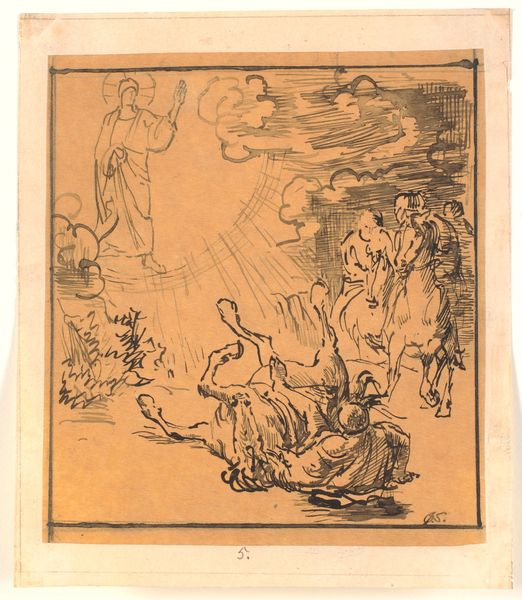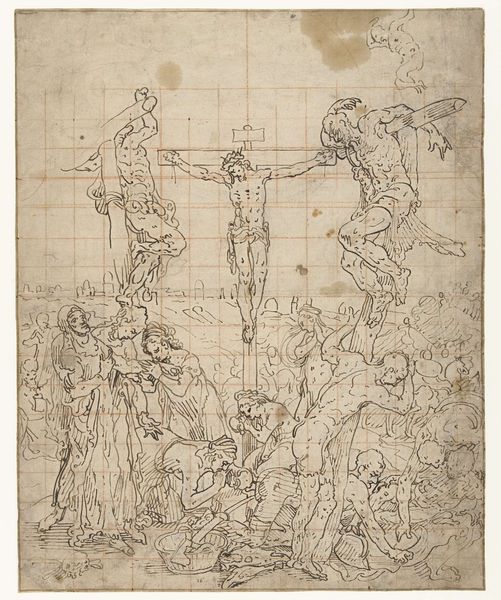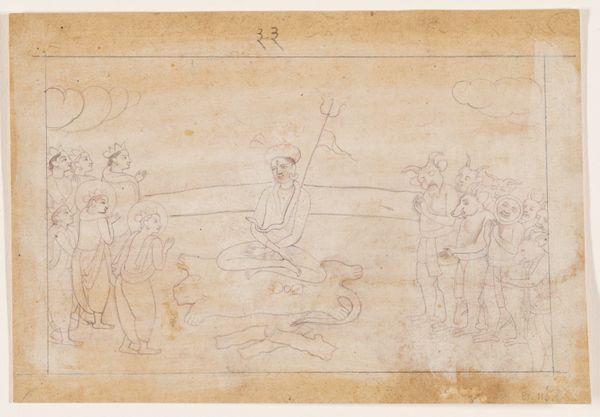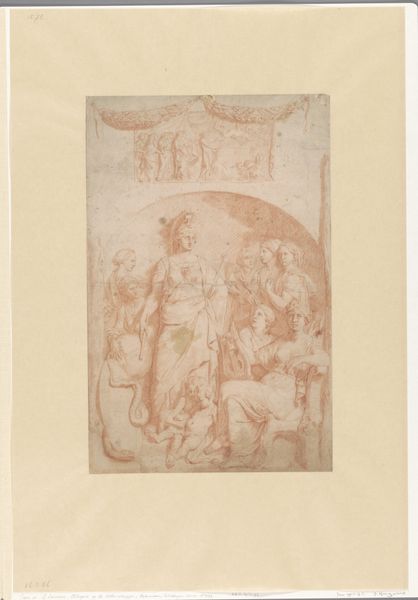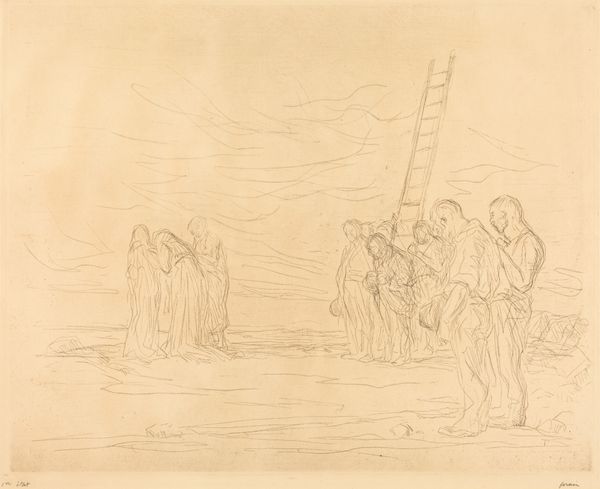
Ontwerptekening voor een communiediploma voor Norbertine Lammers Possibly 1935
0:00
0:00
drawing, paper, pencil
#
drawing
#
pen sketch
#
landscape
#
figuration
#
paper
#
pencil
#
line
#
academic-art
Dimensions: height 314 mm, width 405 mm
Copyright: Rijks Museum: Open Domain
Curator: This drawing, tentatively dated to 1935, is titled "Ontwerptekening voor een communiediploma voor Norbertine Lammers," and it’s attributed to Leo Gestel. It’s rendered in pencil and pen on paper and resides here at the Rijksmuseum. Editor: It has a tender, dreamlike quality, wouldn’t you say? The soft pencil lines and floating figures give it such an ethereal feel. Curator: Absolutely. The composition, framing a central scene with floating angels and rural imagery, echoes a very specific visual language associated with religious and commemorative certificates of the era. It draws heavily on familiar symbols and imagery designed to convey both sanctity and personal connection to the young Norbertine Lammers on this important occasion. Editor: And the details really build this layered meaning. Note the juxtaposition of the kneeling figure next to what appears to be a village church with imagery of everyday life—houses, fields and animals. The floating angels act almost as guardians overlooking her pious moment, suggesting not just a sacredness to the communion but a connection to Norbertine’s whole world. What does this artwork tell us about the politics of the image? Curator: It reveals how the Catholic Church embedded its ideals in quotidian existence; it reveals both a grand, powerful church structure combined with more immediate, pastoral existence. These kinds of celebratory documents were carefully crafted to ensure a powerful message that reinforces specific social structures. It serves as an active means of social indoctrination through art. Editor: The lettering itself even carries meaning. The almost illuminated lettering that surrounds all sides recalls the most significant manuscripts throughout the Middle Ages. Even without understanding the text, this technique invokes deep traditions in Christian cultures. Curator: Precisely! Gestel employs recognizable artistic language as a strategy, thus underscoring not just religious but political and cultural ideals to specific populations. Editor: It makes you wonder what Norbertine Lammers thought when she first saw this design all those years ago. Did she recognize these symbols? Did the imagery speak to her faith, community, or social obligations? Curator: Those are vital questions, indeed! It helps me remember the profound role these certificates, though seemingly simple, played in structuring both private religious experience and broader communal values. Editor: Looking closer I am touched by the care and detail embedded within the entire artwork—Gestel’s work acts not just a historical relic but also as a powerful expression of an ongoing heritage of imagery, memory, and belief.
Comments
No comments
Be the first to comment and join the conversation on the ultimate creative platform.
